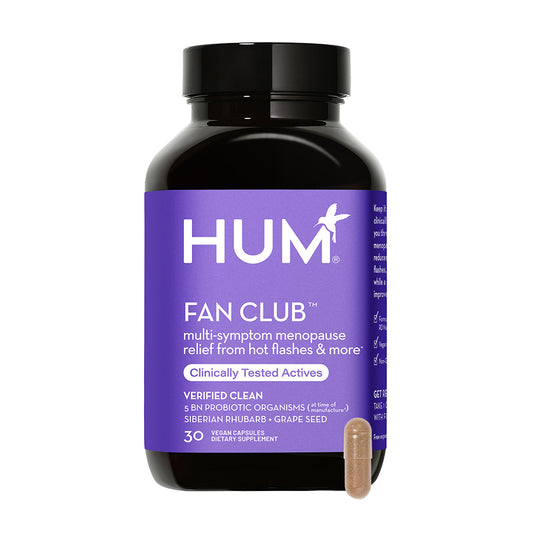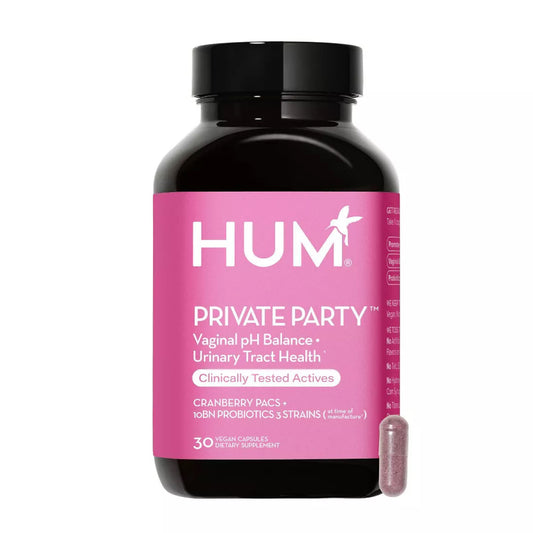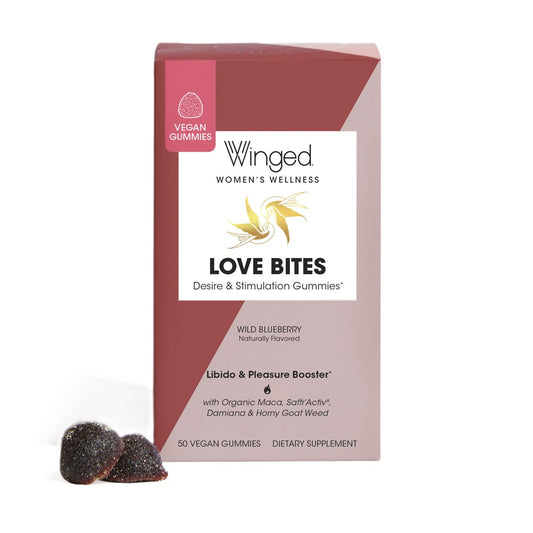As we age, there are lots of things we might not be able to do like we used to. Activities we’ve always enjoyed, like travel, exercise — and yes, sex — can become more challenging. But that doesn’t mean we should stop doing them altogether. We just might need to make a few adjustments.
We might need to change the types of places we choose to travel to —while making sure they’re equally spectacular. We might choose a brisk walk instead of a long run. And we may decide to start keeping personal lubricant near our bed. In this article, we’re focusing on that last one. We want to help people who’ve been using lube better understand their options — and help others know where to start.
What is personal lubricant? Why would I want to use it?
As you may have already discovered, menopause can really get in the way of a romantic evening. As we age, some of us may experience vaginal dryness. During menopause, vaginal tissue becomes thinner and less flexible, and the body produces less lubrication than it did before. All of this can make having sex painful and do the opposite of put you “in the mood”. A personal lubricant (otherwise known as “lube”) can come in different materials that can help reduce friction and make having sex more comfortable and enjoyable.
There are also products out there called vaginal moisturizers. You should always read and follow the label and instructions for these products. But in general, they can be used a few times a week to help vaginal tissues retain moisture more effectively. Hand or body lotions should not be used as a substitute because they can easily irritate the vaginal tissues.

How to choose a lubricant
Even if you’ve used a personal lubricant in the past, chances are you may not have spent a lot of time browsing the various bottles and squeeze tubes lining the drugstore aisle. You have just spotted a familiar brand and quickly added it to your shopping basket before anyone else could see (Hey, we’ve done it, too). But personal lubricants aren’t one-tube-fits-all. As the name makes clear, they’re personal. So, finding the right type of lube shouldn’t be a rushed endeavor. It should be an educated one, where you can confidently choose the product that helps meet your needs and preferences. And trust that you’re not the only one interested in learning more.
A 2012 study found that 65.5% of women and 70% of men used lubricants to make having sex more comfortable and pleasurable.
So, get ready to take notes because we’re going in — to the big, wonderful world of personal lubricants. Learn pros and cons of several types to find the one that may be right for you.
And of course, feel free to talk to your doctor or other healthcare provider if you have questions or concerns about your use or choice of a lubricant.
Water-based lubricants
Water-based lubes that contain glycerin are popular, but there are also glycerin-free options for those who are prone to frequent yeast infections. Water-based lubes are the most natural feeling lubricant and one of the most popular.
PROS:
- Non-greasy
- Rinses off easily from skin and fabric
- Safe to use with condoms and sex toys
CONS:
- Doesn’t last as long
- May have to be reapplied because the body absorbs it quickly
Silicone-based lubricants
PROS:
- Lasts longer than water-based lubricants
- Safe to use with latex condoms
- Feels silky smooth
CONS:
- Can feel greasy for some people
- May stain fabric
- Not safe to use with silicone sex toys

Hybrid lubes
These are a blend of water-based and silicone-based lubricants. They provide the feeling of a water-based lubricant but won’t dry out as quickly.
PROS:
- Combines the best of both worlds: mostly water-based with a smaller percentage of another lube (usually silicone)
- Longer-lasting
- Can feel like natural bodily fluids
CONS:
- While it lasts longer, it doesn’t last as long as silicone-based lube.
- May stain fabric
- Not compatible with all sex toys
Oil-based lubricants
Oil-based lubes contain many readily available products, such as kitchen oils. They are the least commonly used lubricants.
PROS:
- Longer-lasting
- Can double as a massage oil
CONS:
- Can be messy
- Can’t be used with latex condoms, as they will destroy the latex
- Can damage sex toys
- Feels oily or greasy
- May stain fabric
If you’re new to lube, water-based can be a good place to start, but it can also be fun to experiment a bit to see which kind works best for you. Read the product label for more complete information and follow the instructions on how to use it.

How to safely use personal lubricants
While lubricant usage is generally quite safe, a few things to keep in mind as you explore which may work best for you:
- Don’t use kitchen or bathroom items (cooking oil, body cream, massage oils, petroleum jelly, slippery foods) as they can increase the risk of infections, like bacterial vaginosis, and may cause condoms to break down.
- Check the product label to ensure it’s free from fragrance, color, flavors, spermicides, herbal, and other special ingredients as they can be irritating or increase the risk for infection. This is especially important if you tend to have sensitive skin.
- Pay attention to the osmolality. This is the concentration of dissolved chemicals in a water-based lube. An osmolality that is too high or low can damage epithelial cells – the outermost skin cells. Several global organizations recommend products with osmolality no greater than 380 mOsm/kg. Unfortunately, many major name brands have an osmolality of 2000-6000 mOsm/kg, so you’ll need to research to find products that have safer osmolality.
Now that you’re armed with personal lube knowledge, it’s time to hit the drugstore (or your favorite online retailer) — confidently — and start enjoying sex again. Who knows – maybe this was the nudge your sex life needed?





